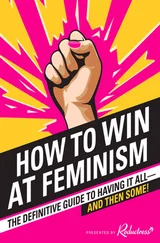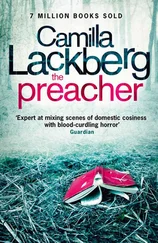
Figure 1.11 Applying pressure to all surfaces of the finger
Zone therapy demonstrates the correlation and interdependence of all parts of the body. In his chapter ‘Zone therapy – for doctors only’, Fitzgerald commented: ‘six years ago I accidentally discovered that pressure with a cotton-tipped probe in the mucocutaneous margin of the nose gave an anaesthetic result’. He also went on to explain about how pressure on hands and feet and over joints reproduced the same characteristic results in pain relief. He stated that, when the pain was relieved, the condition that produced the pain was most generally relieved also, and that this led to the ‘mapping out’ of these various areas and associated connections and also to the conditions influenced through them.
He wrote that clasping the hands firmly was effective for many conditions including nervousness, anxiety, insomnia. Also clasping them for 10 minutes would help all pulmonary problems and even the common cold, while changing the clasp position from one hand to the other for 10 minutes each time would help to relieve many minor symptoms and in some cases even more involved problems.
He stated that neck and thyroid problems could be relieved by using distal pressures on the base of the first phalanx of the great toe or thumb and second and third digits respectively. (This was clearly stated so that errors in later books should not arise.) For lumbago one should work on the edge of the palm in line with the ring and little finger, but the most rapid relief for sciatica was secured by attacking the soles of the feet. Fitzgerald often spoke of curing lumbago with a comb; his instructions were to press the teeth into the palmar surface of the thumb first and then the second and third fingers and occasionally work on the webs, especially between thumb and first finger, and to work even the very tops of fingers and right up to wrists as this would help the entire zone. The palmar surface of the hands was to be attacked for pains in the back of the body and the dorsal or top surfaces of hands and fingers for any problems in the anterior (front) surface of body.
He added that, for eye problems, pressure could be applied to the index finger and sometimes middle finger if the eyes were set far apart. He spoke of squeezing the big finger or corresponding toe for ear problems. Pictures showed the distal phalange being squeezed by thumb and forefinger, or tight elastic bands being placed around them; one of the most effective methods for ear problems was placing a clothes peg to the tip of the ring finger or the fingers on either side, or raising the nail of the fourth finger for tinnitus. This point is a known acupuncture point ( see figure 6.8b).
Pressure was often applied using aluminium combs, pointed instruments, tight elastic bands, clothes pegs or clamps on the fingers or toes ( figure 1.12). Fitzgerald also spoke of how to use pressure with fingers and thumbs from anything between 1 and 4 minutes. The use of the many non-electrical applications such as surgical clamps, aluminium combs, elastic bands, pegs and percussion motors never really caught on because they were so invasive. Fitzgerald also had ‘therapy bites’ and ‘therapy grips’; these were saw-edged articles or sometimes just metal combs. He even used rubber erasers. However, hands and the precise techniques of the correct pressure were all that was really needed.
He stated how all the zones must be free from irritation and obstructions to get the best results. His writings spoke of how important teeth were and how they should be preserved, also how offending corns, warts, calluses, etc. created an inflammatory process, which could cause a problem in a corresponding part of the body, how fingernails and toenails should be kept trimmed and how too much pressure from shoes could be detrimental to health within that zone.
Fitzgerald gave four different reasons in his book for how zone therapy worked (this is also outlined in the book Reflexology: Art, Science and History by Christine Issel). He stated:

Figure 1.12 (a) A method of treating earache, toothache and any pain. (b) Combs applied to the fingers to treat complications of the mid-thoracic and lower back, and other deep-seated problems.
while we know the fact of pain relief, through the laying on of the hands, or by kindred measures, we only know part of its reason for operation. There are several of these. They are:
1 Through the soothing influence of animal magnetism
2 The manipulation of the hand over the injured place tends to prevent a condition of venous stasis
3 Pressure over the seat of injury produced ‘blocked shock’ or ‘nerve block’ which meant that by pressing on the nerves running from the injured part to the brain area we inhibit or prevent the transmission to the brain of the knowledge of the injury
4 Pressure over any bony eminence injured, or pressure applied upon the zones corresponding to the location of the injury will tend to relieve pain. Not only will it relieve pain but if the pressure is strong enough and long enough and in the right place it will frequently produce analgesia, or insensibility to pain.
These are some of the many ailments that Fitzgerald said he treated:
Abdominal pains
Abortion (prevention of)
Angina pectoris
Arm problems
Asthma
Backache
Bladder problems
Blood pressure disorders
Brachial neuritis
Breast problems
Bronchitis
Cancer (he never claimed to cure)
Colds
Conjunctivitis
Constipation
Coughs
Deafness
Diarrhoea
Epilepsy
Eustachian tube problems
Eye problems
Falling hair
Foot problems
Gall bladder problems
Goitre
Haemorrhoids
Hay fever
Headache
Heart problems
Hiccough
Hysteria
Insomnia
Intestinal problems
Labour pain
Laryngitis
Liver problems
Locomotor ataxia
Loss of voice
Lumbago
Lung problems
Menses
Migraine
Morning sickness
Mumps
Nasal catarrh
Nervousness
Neuralgia
Ovarian problems
Paralysis
Pneumonia
Prostate
Quinsy
Rheumatism
Sciatica
Sea sickness
Sneezing
Sore throat
Testes problems
Throat problems
Tinnitus
Toothache
Torticollis
Tuberculosis
Tumours
Uterine problems
Whooping cough
Zone therapy and acupuncture points
Fitzgerald never clarified where he became acquainted with the theory of zone therapy. He only spoke about how he stumbled upon the concept of zone therapy, and never ever mentioned whether there was any Oriental connection. Many of his reflex areas do correlate with acupuncture points, however.
For example, he spoke of Signor Umberto Sorrentino, a noted tenor, relieving his tight throat by squeezing the lateral aspect of the forefinger and thumb; these are acupoints governing the vocal chords. He also spoke of digging the fingernails into the inner side of the thumb. There is another well-known acupoint at the base of the thumbnail known as Lung 11 (abbreviated to LU-11) and it is effective for any throat problems or shortness of breath.
Fitzgerald also stated that scratching stimulates, deep pressure relaxes and that this knowledge should help many stomach problems. Morning sickness in pregnancy responded to deep pressure on backs of hands or the palmar surface of wrist and forearms. There is an acupoint on the inner forearm just below the wrist, Pericardium 6 (PE-6), used for nausea including motion sickness (utilized commercially in ‘Sea-Band’ wristbands).
Читать дальше













